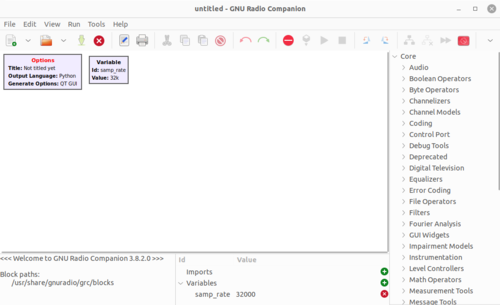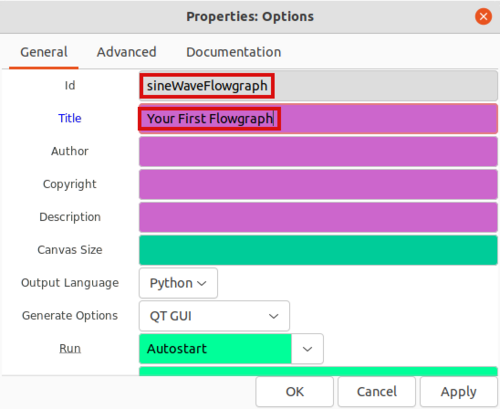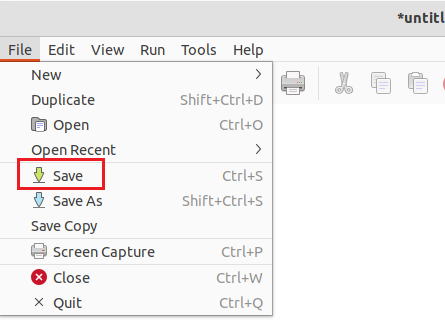Your First Flowgraph: Difference between revisions
Mattcarrick (talk | contribs) No edit summary |
Mattcarrick (talk | contribs) |
||
| Line 2: | Line 2: | ||
== Starting GNURadio Companion == | == Starting GNURadio Companion == | ||
The GNURadio Companion (GRC) is a visual editor for assembling and flowgraphs. Start GRC by opening a terminal and typing: | The GNURadio Companion (GRC) is a visual editor for assembling and flowgraphs. GRC uses ''.grc'' files which are then translated into Python ''.py'' flowgraphs. Start GRC by opening a terminal and typing: | ||
<code>$ gnuradio-companion &</code> | <code>$ gnuradio-companion &</code> | ||
| Line 11: | Line 11: | ||
[[File:NameYourFlowgraph.png|500px]] | [[File:NameYourFlowgraph.png|500px]] | ||
The ''Id'' will be the filename of the Python flowgraph which in this case will be ''sineWaveFlowgraph.py''. The ''Title'' entry is a description of the flowgraph. Click ''OK'' and then click ''File : Save'' to save your GRC Flowgraph. | |||
[[File:GRCClickSave.png|500px]] | |||
You will then need to enter a name for your ''.grc'' file which is ''sineWaveGRC.grc'' to distinguish it from the ''.py'' flowgraph. | |||
[[File:EnterGRCName.png|500px]] | |||
Revision as of 16:55, 3 January 2022
This tutorial will guide you through running your first flowgraph in GNURadio.
Starting GNURadio Companion
The GNURadio Companion (GRC) is a visual editor for assembling and flowgraphs. GRC uses .grc files which are then translated into Python .py flowgraphs. Start GRC by opening a terminal and typing:
$ gnuradio-companion &
Double click the Options block on the upper left hand corner and name your flowgraph by editing the Id and Title entries:
The Id will be the filename of the Python flowgraph which in this case will be sineWaveFlowgraph.py. The Title entry is a description of the flowgraph. Click OK and then click File : Save to save your GRC Flowgraph.
You will then need to enter a name for your .grc file which is sineWaveGRC.grc to distinguish it from the .py flowgraph.



